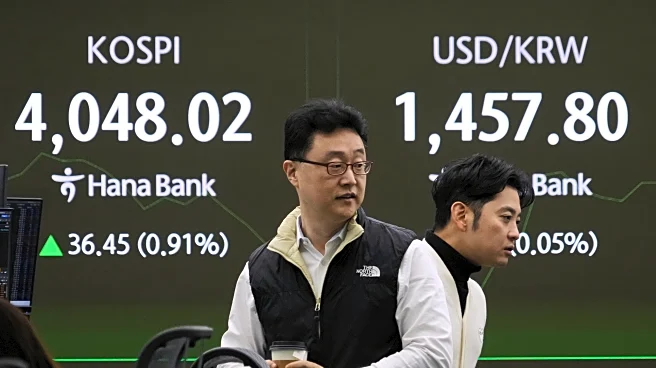What's Happening?
The United States and China have reached an agreement on several trade adjustments aimed at easing tensions between the two countries. These measures include the reduction of International Emergency Economic
Powers Act (IEEPA) tariffs on imports from China and Hong Kong, as well as the suspension of certain Section 301 shipbuilding fees. The agreement also extends some Section 301 exclusions and provides relief for export controls.
Why It's Important?
The de-escalation of trade tensions between the US and China is significant for global economic stability. The ongoing trade disputes have impacted various industries, including technology, manufacturing, and agriculture, leading to increased costs and uncertainty for businesses. By agreeing to these measures, both countries aim to foster a more stable trade environment, which could benefit global supply chains and economic growth. The agreement also reflects the complex geopolitical dynamics between the two largest economies in the world.
What's Next?
As the US and China continue negotiations, businesses and policymakers will be closely monitoring any further developments. The potential for additional agreements or changes in trade policies could have far-reaching implications for international trade and economic relations. Companies involved in cross-border trade will need to stay informed and adapt to any new regulations or tariffs that may arise.
Beyond the Headlines
The use of artificial intelligence by US Customs and Border Protection to detect transshipment-related tariff evasion highlights the increasing role of technology in trade compliance and enforcement. This development underscores the need for businesses to enhance their compliance efforts and leverage advanced tools to navigate the evolving trade landscape.












